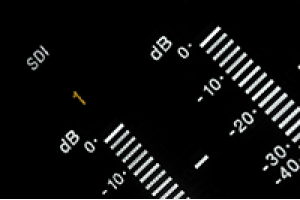Decibel
Decibel.
Although often used as a measure in itself the decibel (dB) is
actually a ratio rather than an absolute measure in itself. When used
with respect to sound, what is often meant is how loud is something
relative to the usually accepted reference of 0dBSPL or the threshold
of hearing, i.e. the minimum level that can be heard. Therefore when
some talks of a level of 100dB they mean 100dB above threshold of
hearing. The decibel is not a linear scale it is logarithmic. If the
sound level is doubled it is 6dB louder.
Some useful levels are listed below for reference.
0dB – threshold of hearing
20dB – whisper
40dB – library or quiet living room
60dB – normal conversation
70dB – traffic
90dB – motorbike
110dB – loud personal stereo
120dB – night club
130dB – threshold of pain
140dB – jet engine.
The human ear can just detect a 1dB change in level, 3dB is a noticeable change but not huge. 10dB is a significant change.
Prolonged exposure to levels above 85dB can damage hearing.
130dB can cause damage to buildings.

